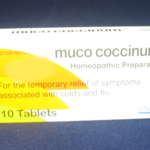There is so much conflicting information about vaccines, people don’t know what to believe. But this is true of most conventional medical information. People have to take the information available, look at it from a non-judgmental perspective, and decide what is best for them. In the case of whether to take or not to take the flu vaccine, I am going to introduce another more effective treatment. But first, let me explain the flu vaccine for the average person to understand.
When you get a flu vaccine, you have two options:
- Intramuscular injection: Trivalent, inactivated (killed) virus (TIV), so they can’t cause the flu.
- Nasal Spray: Live, attenuated, cold-adapted influenza virus (LAIV), that can cause weakened infection in susceptible populations.
What’s in a flu shot?
- Egg protein: Many flu vaccines are made by growing the viruses inside fertilized chicken eggs. This means that they contain a small amount of egg protein.
- Preservatives: thimerosal is added to multidose vaccine vials to help prevent and kill bacteria and fungi in the vial. Thimerosal-free versions of the flu vaccine are available in individualized doses.
- Stabilizers: Sucrose (table sugar), sorbitol (artificial sweetener), and monosodium glutamate (MSG) are used to keep vaccines stable, preventing vaccines from losing potency, even when exposed to heat and light.
- Antibiotics: Neomycin, gentamicin, and other antibiotics are added to vaccines in very small amounts to stop bacterial contamination.
- Polysorbate 80: An emulsifier to keep all the ingredients evenly distributed.
- Formaldehyde: To inactivate influenza virus. Per the FDA, the level of formaldehyde in a vaccine is much lower than the amount that occurs naturally in the human body.
Of those ingredients, the one most concerning for potential side effects is Thimerosal. Thimerosal contains ethylmercury, an organic form of mercury. Mercury is a heavy metal and is extremely toxic to the body. “Mad Hatter” Disease exemplifies how mercury affects the nervous system. But the CDC tries to minimize the effect of mercury in vaccines by stating:
“It’s safe to use ethylmercury in vaccines because it’s processed differently in the body and it’s less likely to build up in the body — and because it’s used in tiny amounts.”
That’s like saying small amounts of arsenic won’t kill you. But over time, it causes disease and eventual death.
Facts about Influenza viruses
Influenza viruses of the family Orthomyxoviridae are divided into three types—A, B, and C. These viruses infect a range of hosts from humans only (influenza B) to humans and swine (influenza C) to multiple host organisms including humans, swine, equine, avian, and marine mammals (influenza A)
Influenza viruses are highly changeable. Small antigenic changes, known as “antigenic drift,” occur regularly, usually as point mutations in the virus genome or through exchange of small gene segments with another strain of influenza virus.
Occasionally, influenza viruses undergo an abrupt and dramatic change in genome. This change, known as “antigenic shift,” results in a new virus that is so different from previous viruses that no immunity exists in the population and can lead to pandemic influenza. Antigenic shift is usually caused by genetic recombination between two strains of influenza virus; one from a strain that can infect humans and one that, prior to the genetic exchange, could not. Because viral epitopes from the variant strains that result from antigenic shifts and drifts may not be recognized by the immune system, vaccines must be altered regularly to combat the infection.
Influenza viruses are named based on the type of influenza, the location of initial isolation, strain designation number, and the year of isolation (e.g., A/Brisbane/59/2007). Influenza A viruses are further divided into subtypes based on the characteristics of the hemagglutinin (H or HA) and neuraminidase (N or NA) surface proteins. This subtyping is the basis of the H#N# designations of the influenza A viruses. Influenza B viruses are subdivided as Yamagada or Victoria based on genetic lineage. Of the three types, influenza A viruses are the only viruses proven to cause pandemic disease and are capable of interspecies transmission, such as avian (H5N1) influenza from poultry to humans.
Influenza viruses have caused epidemics every 1 to 3 years during the past four centuries, and four major pandemics have occurred including the great Spanish flu pandemic of 1918. These pandemics were caused by influenza A viruses H1N1 (1918 and 2009), H2N2 (1957), and H3N2 (1968). In any given year, two influenza A strains considered to be most likely to contribute to widespread (epidemic or pandemic) illness are included in the trivalent vaccine. Because of its ability to produce epidemic disease, an influenza B virus strain is also included in all current vaccines.
In the United States, influenza usually begins in late fall and peaks in mid to late winter. Following an average incubation period of 2 days but ranging from 1 to 4 days, adults and children remain infectious for approximately 5 days after the onset of the illness.
All evaluations of studies by the National Academy of Sciences of the possible connection of neurologic diseases with flu vaccine have ended with the following conclusion:
“The epidemiologic evidence is insufficient or absent to assess an association between influenza vaccine and [the disease].”
But the problem is that most studies in universities are paid for by the pharmaceutical industry with a goal result in mind. The subjects are cherry-picked to give them the results they want. So naturally an evaluation of these studies would not show a cause-effect of disease by vaccines. Bottom line: you can’t trust conventional studies.
Now for the alternative medicine discussion of mercury.
Facts about Mercury:
Mercury is toxic. Forms of mercury taken into the body are:
- Dietary methylmercury from fish and seafood,
- Elemental mercury vapor from amalgam tooth fillings, and
- Thiomersal-contained ethylmercury in vaccines. Thiomersal (thimerosal, merthiolate) has been banned in the United States and Canada since 1999 and in the European Union since 2001 from vaccines recommended for children below seven years.
A potential threat of neurodevelopmental toxic effect of mercury lies in the fact that the exposure occurs in the most vulnerable period of life, when the brain is developing and growing. Organic forms of mercury are more easily absorbed when ingested and are less readily eliminated from the body than its inorganic forms.
Integrated experimental neurotoxicity studies of low-dose thiomersal in vaccines concluded that vaccine exposure possesses the potential to affect human neurodevelopment
A study looking at the accumulation of ethylmercury in the brain of rats in 2012 showed:
Ethylmercury (from Thimerosol) retention was higher in the brain, intestinal excretion was similar, and urinary excretion was much lower compared to inorganic mercury (not as toxic).
Experimental Design:
Rat pups were assigned into three experimental groups: Control, Thiomersal, and mercuric chloride (HgCl2).
The results of mercury mass fraction in organs were expressed as micrograms or nanograms per gram of wet tissue weight (μg or ng/g w.w.) and concentrations of mercury in blood and urine as micrograms per litter (μg/L).
The level of P < 0.05 was considered significant.
Results:
Total mercury fraction in all analyzed tissues of the control pups was more than 1000 times lower than values found in the exposed groups.
Total mercury in TM-exposed group was significantly higher both in blood and in brain than in HgCl2-exposed group. During six-day period of sampling, only whole blood showed a decline with time in both mercury-exposed groups.
Discussion:
Mercury levels decreased in blood and urine in a time-dependent manner while mercury mass fractions in all selected organs remained relatively constant indicating slow mercury elimination from internal organs. Other studies have come to the same conclusion.
This study also shows that there is higher concentration of mercury given in organic form. This may be due to easier transport of organic mercury through cell membranes and to partial transformation of organic mercury form during metabolic pathways into inorganic mercury form.
Conclusion:
Mercury retention is evidently higher in the brain, contributing to the evidence on mercury disposition in the early period of life with the potential of neurodevelopmental toxicity.
Failure of proper regulatory oversight of vaccinations has resulted in disability for life for many people. Tens of thousands of Americans are increasingly becoming victims of vaccine injuries. No national debate is initiated because regulatory malfeasance within federal health agencies has aligned its self-interests with pharmaceutical profits rather than serving the public heal
Flu vaccines are perhaps the most ineffective vaccine on the market. At their best, flu vaccines remain around 50-60% effective according to official health statements. Predictive methodologies to determine which flu strains emerge during any given influenza season have more in common with medieval divination than sound science.
The attenuated virus in the flu vaccine can shed and infect others for months after vaccination. Both the unvaccinated and the vaccinated are at risk. In the past, the CDC has acknowledged this risk and warned
“Persons who care for severely immunosuppressed persons who require a protective environment should not receive LAIV given the theoretical risk for transmission of the live attenuated vaccine virus.”
Two recent studies have been publicized that claim that taking the flu shot decreases the risk of Alzheimer’s. I truly do not believe these results. Mercury is a definite brain toxin. So how could these studies come to that conclusion? First, universities do all their work, including training doctors, with the financial support of the pharmaceutical industry. It would be interesting to find out who paid for these studies, one at the University of Texas at Houston, and one at Duke University. Even if done with a government grant, the government wants results that push vaccines because they are in cahoots with the pharmaceutical industry.
Now part of their evaluation lead them to ask the question “Why?” And the answer is interesting, actually moving toward the alternative medicine concept of widespread inflammation being the cause of chronic diseases. Basically, the jumping to conclusions here is the usual false steps: If A=B, and B=C, then A=C. This method of reasoning has been the primary conventional MO for at least the last 100 years, and probably several hundred.
But regardless of your position on the good vs bad of taking the flu vaccine, I have an alternative treatment that I highly recommend. I will discuss it in the next post: Muco Coccinum.
Addendum:
Interesting that the day after publishing this, the following article showed up in Medscape:
Potential New Swine Flu Pandemic Stirring in China
Flu vaccine won’t help with this new virus. Muco Coccinum could.









Trackbacks/Pingbacks